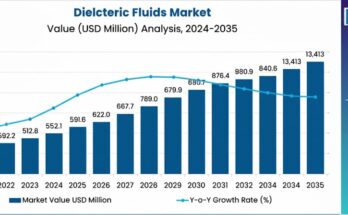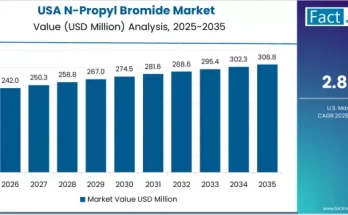As industries and agriculture move toward sustainable production practices, the phosphate alternatives market is gaining prominence as a viable solution to environmental and resource challenges. Increasing concerns about phosphate depletion, soil degradation, and water pollution have accelerated the search for effective substitutes that maintain performance while reducing ecological impact.
Phosphate alternatives are emerging as crucial ingredients across fertilizers, detergents, and food processing applications—supporting both productivity and sustainability goals. This market reflects a growing global commitment to reduce reliance on non-renewable resources and promote eco-friendly innovations across industrial and agricultural ecosystems.
Market Overview:
Phosphate alternatives are materials or compounds designed to replace traditional phosphates without compromising on function or efficiency. They are increasingly used in agriculture, water treatment, and industrial formulations to minimize environmental footprint and comply with strict regulatory frameworks.
The market’s momentum is driven by the transition toward green chemistry, circular economy principles, and sustainable nutrient management practices. As global regulations tighten on phosphate usage due to concerns about eutrophication and resource scarcity, industries are adopting these alternatives to align with environmental compliance and consumer expectations.
Phosphate substitutes such as bio-based minerals, enzymes, and organic compounds are now at the forefront of product development across multiple sectors, offering improved biodegradability, stability, and performance.
Regional Insights:
North America is a key region in phosphate alternatives adoption, supported by strong environmental awareness, research innovation, and regulatory initiatives that encourage sustainable manufacturing. The food and detergent industries are particularly active in adopting phosphate-free formulations.
Europe continues to advance its phosphate alternatives landscape, propelled by stringent sustainability mandates like the European Green Deal and REACH regulations. The region is a leader in developing eco-friendly fertilizer and detergent formulations.
Asia-Pacific is witnessing rapid growth due to rising agricultural modernization, population expansion, and government programs promoting sustainable nutrient management. Countries like India, China, and Japan are investing in advanced solutions to reduce phosphate dependence.
Latin America and the Middle East & Africa are gradually adopting phosphate alternatives, with a focus on improving soil health, promoting sustainable farming practices, and enhancing industrial water treatment efficiency.
Key Trends & Forecast:
- Shift Toward Bio-Based and Microbial Fertilizers:
The adoption of microbial inoculants and biofertilizers is accelerating as industries focus on improving soil health and nutrient efficiency while reducing environmental damage. - Advancements in Enzyme and Mineral Technologies:
Enzyme-based and mineral-based phosphate substitutes are being engineered to mimic or enhance the properties of traditional phosphates, offering high performance and environmental safety. - Clean Label and Sustainable Product Demand:
In food and detergent applications, manufacturers are reformulating products to align with consumer preferences for clean, natural, and phosphate-free ingredients. - Collaborative Research and Innovation:
Joint efforts between biotechnology companies, agricultural institutes, and government organizations are fostering large-scale research and commercialization of phosphate alternatives. - Circular Economy Integration:
Waste valorization and by-product utilization are becoming key trends, where organic residues from food and agricultural processing are repurposed to develop phosphate-free compounds.
Applications & End-Use Outlook:
Agriculture:
Phosphate alternatives play an essential role in fertilizers, helping improve nutrient availability while protecting soil and water systems from contamination. Bio-based and mineral formulations enhance crop productivity sustainably, supporting global food security goals.
Food & Beverage Industry:
Phosphates have long been used for texturizing, stabilizing, and preserving food products. However, the industry’s shift toward natural additives has encouraged the use of phosphate-free solutions that maintain product quality and safety while satisfying clean-label requirements.
Detergents & Cleaning Products:
Phosphate alternatives such as zeolites, citrates, and enzymes are transforming the detergent sector. These substitutes deliver superior cleaning efficiency while eliminating the harmful effects of phosphate discharge on aquatic ecosystems.
Water Treatment & Industrial Processes:
Industrial applications, including water purification and corrosion prevention, are increasingly adopting phosphate-free agents. These solutions enhance operational efficiency while ensuring regulatory compliance and minimizing waste discharge.
Conclusion:
The phosphate alternatives market represents a decisive step toward sustainable and responsible resource management. As industries and governments intensify efforts to reduce environmental impact, the demand for phosphate substitutes continues to rise across agriculture, food production, and industrial sectors.
The market’s evolution reflects the growing recognition that sustainability and performance can coexist through scientific innovation and strategic collaboration. By investing in phosphate alternatives today, companies not only contribute to ecological preservation but also position themselves as leaders in the global sustainability transition.
The coming decade will define the future of phosphate management—one that is efficient, ethical, and environmentally resilient.
Browse Full Report – https://www.factmr.com/report/phosphate-alternatives-market



